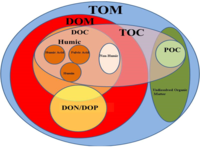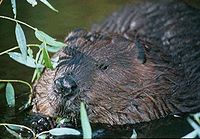
Stronger fertilization effects on aboveground versus belowground plant properties across nine U.S. grasslands
Sign Up to like & getrecommendations! Published in 2022 at "Ecology"
DOI: 10.1002/ecy.3891
Abstract: Abstract Increased nutrient inputs due to anthropogenic activity are expected to increase primary productivity across terrestrial ecosystems, but changes in allocation aboveground versus belowground with nutrient addition have different implications for soil carbon (C) storage.… read more here.
Keywords: addition; belowground; fertilization; biomass ... See more keywords

Scale-Dependent Influences of Distance and Vegetation on the Composition of Aboveground and Belowground Tropical Fungal Communities.
Sign Up to like & getrecommendations! Published in 2020 at "Microbial ecology"
DOI: 10.1007/s00248-020-01608-4
Abstract: Fungi provide essential ecosystem services and engage in a variety of symbiotic relationships with trees. In this study, we investigate the spatial relationship of trees and fungi at a community level. We characterized the spatial… read more here.
Keywords: community turnover; distance; fungal communities; belowground ... See more keywords

Aboveground herbivores drive stronger plant species-specific feedback than belowground fungi to regulate tree community assembly.
Sign Up to like & getrecommendations! Published in 2021 at "Oecologia"
DOI: 10.1007/s00442-021-04868-0
Abstract: Ectomycorrhizal (EcM) tree species often become more dominant than arbuscular mycorrhizal (AM) tree species in temperate forests, but they generally coexist. Theory predicts that ecological feedback mediated by aboveground herbivory and/or belowground microbes could explain… read more here.
Keywords: plant; plant species; tree; species specific ... See more keywords

Beneficial worm allies warn plants of parasite attack belowground and reduce aboveground herbivore preference and performance.
Sign Up to like & getrecommendations! Published in 2021 at "Molecular ecology"
DOI: 10.1111/mec.16254
Abstract: Antagonistic interactions among different functional guilds of nematodes have been recognized for quite some time, but the underlying explanatory mechanisms are unclear. We investigated responses of tomato (Solanum lycopersicum) to two functional guilds of nematodes… read more here.
Keywords: belowground; functional guilds; plant; preference performance ... See more keywords

Asymmetric belowground carbon transfer in a diverse tree community.
Sign Up to like & getrecommendations! Published in 2022 at "Molecular ecology"
DOI: 10.1111/mec.16477
Abstract: Mycorrhizal fungi can colonize multiple trees of a single or multiple taxa, facilitating bidirectional exchange of carbon between trees. Mycorrhiza-induced carbon transfer was shown in the forest, but it is unknown whether carbon is shared… read more here.
Keywords: community; belowground; carbon transfer; transfer ... See more keywords

Rapid restoration of belowground structure and fauna of a seagrass habitat
Sign Up to like & getrecommendations! Published in 2020 at "Restoration Ecology"
DOI: 10.1111/rec.13289
Abstract: Seagrass meadows are habitat for an abundance and diversity of animal life, and their continuing global loss has focused effort on their restoration. This restoration not only aims to re‐establish the structure of the seagrass,… read more here.
Keywords: seagrass; rapid restoration; recovery; belowground ... See more keywords

Targeting the Active Rhizosphere Microbiome of Trifolium pratense in Grassland Evidences a Stronger-Than-Expected Belowground Biodiversity-Ecosystem Functioning Link
Sign Up to like & getrecommendations! Published in 2021 at "Frontiers in Microbiology"
DOI: 10.3389/fmicb.2021.629169
Abstract: The relationship between biodiversity and ecosystem functioning (BEF) is a central issue in soil and microbial ecology. To date, most belowground BEF studies focus on the diversity of microbes analyzed by barcoding on total DNA,… read more here.
Keywords: ecosystem; biodiversity ecosystem; ecosystem functioning; belowground ... See more keywords

Volatile organic compounds shape belowground plant–fungi interactions
Sign Up to like & getrecommendations! Published in 2022 at "Frontiers in Plant Science"
DOI: 10.3389/fpls.2022.1046685
Abstract: Volatile organic compounds (VOCs), a bouquet of chemical compounds released by all life forms, play essential roles in trophic interactions. VOCs can facilitate a large number of interactions with different organisms belowground. VOCs-regulated plant-plant or… read more here.
Keywords: belowground; organic compounds; vocs; plant ... See more keywords